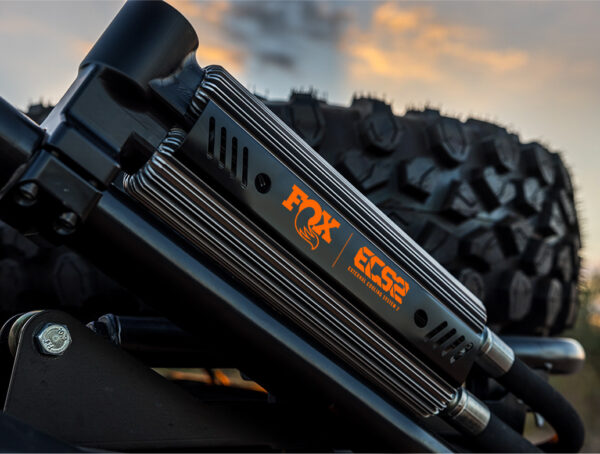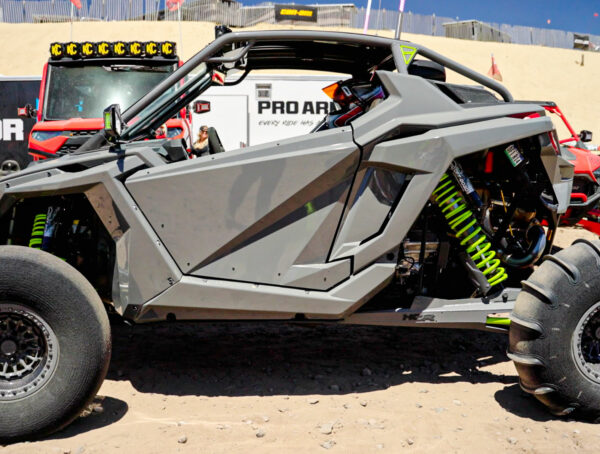If you own a UTV, you know that a few rides after purchase, the shocks seem to feel lower and less responsive. This is normal break-in and all you have to adjust the preload of the springs to compensate. But what if you’re 2,000… 3,000… 5,000 miles into your rig and it doesn’t handle the same, the tender springs are collapsed, or maybe you have a leaky seal?! Your shocks are not like an automotive strut that never gets touched after purchase. Your offroad shocks are a wear and maintenance item that needs scheduled service!
Why You Need Your Shocks Serviced
When you’ve driven your UTV for over 2,000 miles, you’re going to want to schedule a service. If it is going to be your first service, it’s recommended to have the entire shock gone over for a wear inspection and preventative maintenance. Many people are surprised to find out that there was a moving component that has worn through the shock body, or that oil is leaking out of a bad seal, etc. Taking your shocks into a service department can save you thousands in future repair costs.
Shocks can degrade over time in four major ways:
- Shock coil break-in, sag, or failure
- Loss of nitrogen pressure and/or oil
- Burnt or worn out shock oil
- Wear and/or damage to internal components
Shock Coil Break-In or Failure
During the first year of ownership, a UTV’s shocks go through some of the most abusive treatments of their lifespan. New owners tend to drive hard to find the limits of their driving ability along with the vehicles physical limits. During these times, shocks can be repeatedly pounded with improper adjustments and/or overloaded with more weight than they are rated for. This causes springs to wear out or fail prematurely. Signs your coil springs are worn out are include much lower sag on the suspension from stock ride height spec, easy bottoming out during fast engagements of whoops or g-outs. You may also see your springs’ power coat completely chipped off where the spring binds against itself.
Another sign of failing springs is if your shocks get extremely hot during non-abusive rides. This is due to the springs not taking their share of the work load and relying on the valving to do most of the work. You’ll typically find yourself trying to adjust the shock’s clickers to full firm, only to get the same ride quality!
Loss of Nitrogen Pressure
Nitrogen is used in shock reservoirs to help push back against the oil during the shock’s rebound motion. This pressurized nitrogen will typically be set around 200 psi which is a large amount of pressure and not something the typical consumer has the tools to replace, nor the nitrogen tanks.
Nitrogen will degrade and leak over time as it is in a hydrodynamic environment; a little bit will be lost in the sweep of the piston. Additional loss can occur if abusive riding is a normal activity during your outings. On common area of leaking is also the back of the reservoirs where they are typically recharged. The rubber grommet that is punctured during service can become degraded over time.
Burnt & Worn-Out Shock Oil
Your shock oil is a consumable, just like the motor oil in your car’s engine. While motor oil and shock oil operate in different environments for different purposes, their weaknesses are the same. Heat, overuse, and cavitation can all lead to reduced performance or breakdown.
Overheated oil is probably the most common scenario with UTV shocks. No UTVs, at the time of this article’s writing, come with external oil coolers. Often times people consider an external reservoir on their rear shocks as an oil cooler. This is incorrect and, while there is less heat above the UTV than in the wheel well or engine compartments, only a true oil cooler design like the recently announced Fox ECS2 Oil Cooler actually is cooling the shock oil.
When your springs are not properly adjusted, under sprung (to light of a spring rate), or collapsed, the shock’s valving is the only thing absorbing the bumps and hits. This creates additional stress on the oil as it transfers through the compression, bypass, and rebound valving. Remember, for every bump, there’s also a rebound… the oil is stressed twice during every stroke. Every time it passes through a valve, that resistance builds heat in the oil.
Cavitation can happen when a vehicle’s shocks are abusively overworked. This is very common in desert race applications where the driver can navigate miles of whoops and obstacles at speed for hours on end. When a shock is not valved correctly, or the springs are not sprung correctly, a high-speed compression and/or bottoming out of the shock internals can create a cavitation scenario that damages the internal surfaces of the shock tubes and valving. Once damage as occurred in this scenario, it will only continue to get worse and eventually lead to a shock failing.
Seen & Unseen Shock Damage
During the lifespan of your UTV’s shocks, harsh riding will eventually impact the shocks integrity. The most common external wear point is the surface of the threads. The shock body will have threading down the outside for the positioning of the preload rings and crossover rings (if provided). This surface can easily be damaged by an unbalanced spring or improperly clocked springs (the rotational position of the springs ends). The spring can compress and push in towards the shock body where it will make contact with the surface during the stroke and damage the threads or even the body of the shock. Damaged or worn springs can commonly damage shocks in this way.
On the inside of the shocks, the most common damage comes with the degradation of the piston’s wear band. This wear band is similar to the piston rings in a motor’s cylinder. This is the contact surface between the shocks’s piston movement and the shock body. If you have internal bypass shocks, it would be moving against the inner bypass body. These bodies, on the more advanced shocks like Fox Podiums or Dynamix/Smart Shoks, have a very special coating that works with this wear band to reduce frictional damage and heat. If contaminants from compromised oil or a degraded wear band are introduced to this constant motion and heat, that coating will begin to degrade and eventually that shock body will split under load.
Where to Get Your Shocks Serviced
Your shocks can and will need scheduled maintenance. There are very few companies that specialized in shock rebuilds and tuning. MTS Off-Road is one of those few companies. What makes them different is that you can get your system dialed in-person in Pheonix, AZ, or by one of their trained and authorized dealers across the country. You can even purchase their spring kits online and install them yourself using their included and online installation manuals.
Spring Kit, Rebuild, or Full Tune?
One of the common questions we get is if a UTV should have just a spring kit installed, if they should be completely rebuilt and serviced, or if they should go under the knife and get a full-on tune. Below is a checklist to go through to know if you should get one or another, or more than one, done to your shocks.
When to Purchase A Spring Kit
- You have stock shocks and springs
AND - You have worn or failing stock springs resulting in a soft ride or lost ground clearance.
OR - The total cargo weight of your vehicle (including all accessories, luggage, and passengers) exceeds 75% of the vehicles rated cargo capacity.
OR - Your riding style exceeds the rated capability of the stock main and tender springs.
When to Have Your Shocks Rebuilt
- You have driven your UTV’s shocks for over 2,000-2,500 miles since you bought or last serviced your shocks.
OR - Your shock’s adjustment clickers don’t seem to have as much affected range as when it was new.
OR - You spot dirt build-up around the bottom of the shock reservoir indicating a leak.
OR - You notice the shocks get very hot during non-aggressive riding.
OR - You notice your shocks adjustment clickers sunken in indicating lack of nitrogen pressure.
OR - Your shock rebound is not keeping up with the whoops or repeated impacts.
When to Have Your Shocks Fully Tuned
- You are racing professionally requiring your shocks to behave in a specific way with a specific vehicle weight.
OR - You have customized your UTV with enough modifications that handling characteristics of your vehicle have changed.
OR - You want your vehicle to handle in a very specific way during the stroke of the shock, including new or different bypass zones.
Summary
Everybody should be educated and document the ride height and handling characteristics of their vehicle starting the first day you drive it off the dealer’s lot. It is very easy to assume things have changed over time and as you have developed your riding skill. It’s always nice to be able to reference back to a baseline.
Every UTV owner should plan on having their shocks serviced every other season or 2,000-2,500 miles. If you get your shocks sprung correctly and keep up on the servicing, you will spend more time enjoying the ride and less time scratching your head when the car doesn’t perform the way you want it to.








